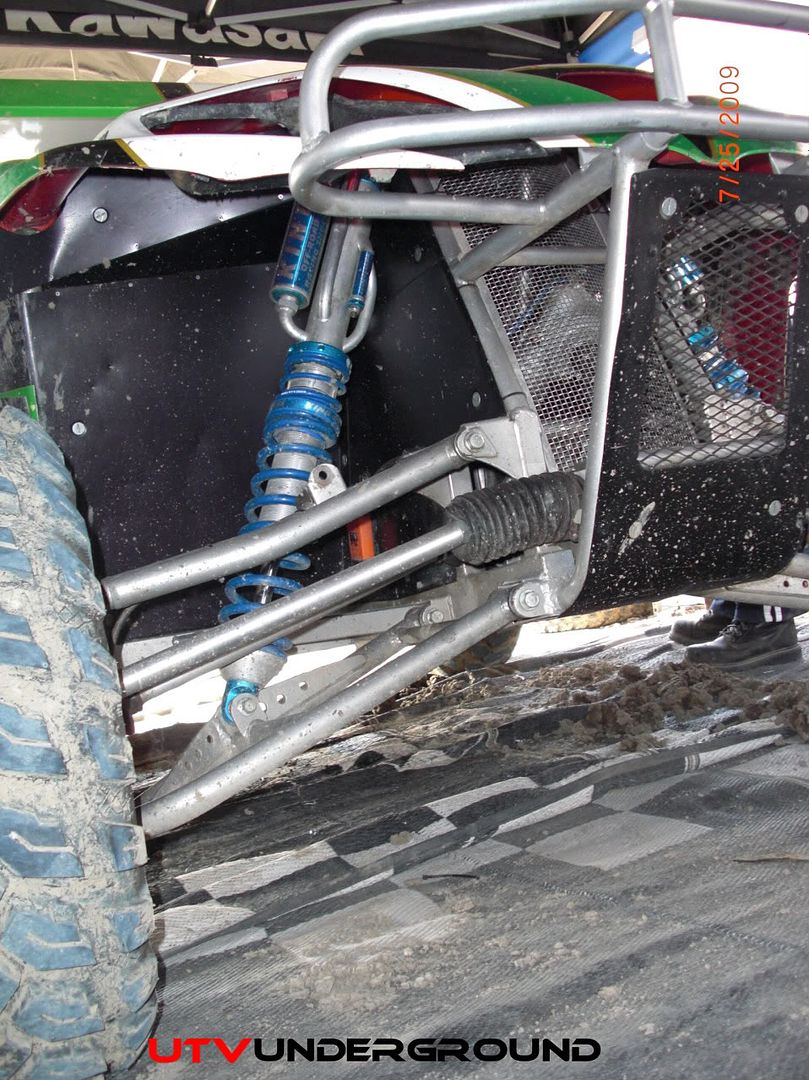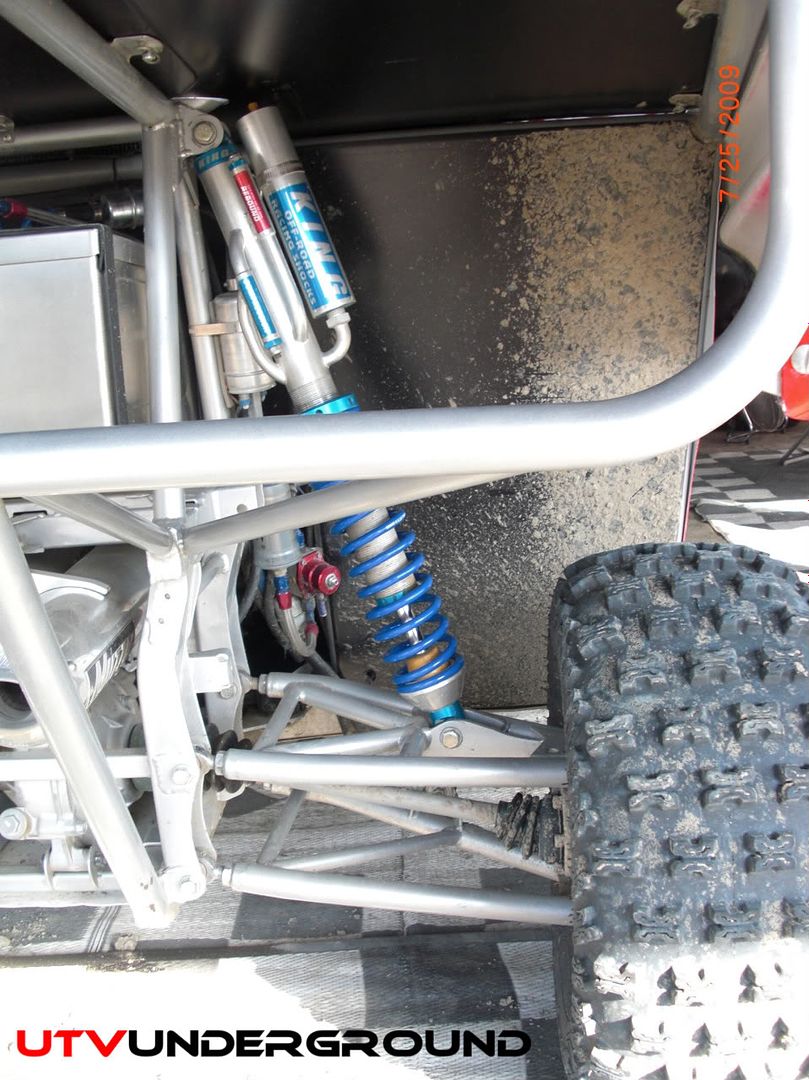Ok I have a few questions for everyone. I am not looking for inside info or some top secret info.
I want to understand proper working utv suspension. I understand we have many uses and tracks versus dunes etc....
However If a teryx has complete movement up and down to each point where you dont want to damadge cv's or ball joints. Should a shock not be able to move completely from point A To Point B?? Ride height should be controlled by spring correct?? Why would you limit down travel except for binding of the cv or BJ. The up travel should be limited for the same reasons plus tire rub? You also dont want the bottom of the car dragging ass depending on tire size right?
Also Angle of shocks? Most LT kits except for a few use stock shock mounts. When you go LT the shock is moved out and has to work at more extreme angles right??? So what is the proper angle or degree of lean shocks should have to prevent binding. If they are mounted more upright would not true movement of the arm and shock be simulated versus more angle and less movement?
Again not looking for "top secret " info Just informed feed back to truly understand the proper workings of things. Kawi spent bucks to get these angles right so ????


I want to understand proper working utv suspension. I understand we have many uses and tracks versus dunes etc....
However If a teryx has complete movement up and down to each point where you dont want to damadge cv's or ball joints. Should a shock not be able to move completely from point A To Point B?? Ride height should be controlled by spring correct?? Why would you limit down travel except for binding of the cv or BJ. The up travel should be limited for the same reasons plus tire rub? You also dont want the bottom of the car dragging ass depending on tire size right?
Also Angle of shocks? Most LT kits except for a few use stock shock mounts. When you go LT the shock is moved out and has to work at more extreme angles right??? So what is the proper angle or degree of lean shocks should have to prevent binding. If they are mounted more upright would not true movement of the arm and shock be simulated versus more angle and less movement?
Again not looking for "top secret " info Just informed feed back to truly understand the proper workings of things. Kawi spent bucks to get these angles right so ????



